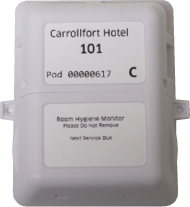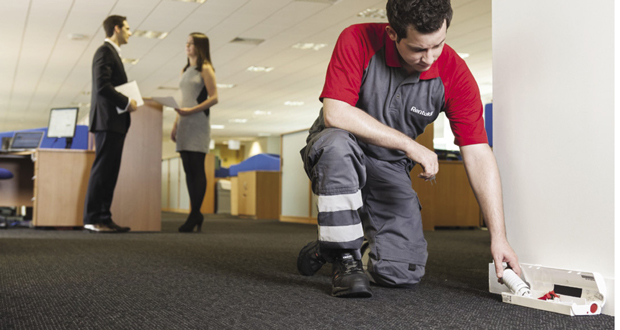ROBERT FRYERS, CEO AND CO-FOUNDER OF SPOTTA HAS AN EXPLANATION OF THE TECHNOLOGY BEHIND THE LATEST PEST CONTROL SYSTEMS
Pests of all shapes and sizes have inflicted financial and operational pain on businesses for generations, with the potential to contaminate buildings, spread disease, damage stock, gnaw through wires and ruin a business’ reputation. Facility managers need to be alert and react thoroughly and quickly to the threats that pests pose.
A shift to smart buildings provides well-documented opportunities for enhanced efficiencies and reduced costs, but it also provides an opportunity for facility managers to revolutionise pest control. Facility managers who utilise technology can reduce operational costs and move their pest management programme towards a proactive, ‘always on’ approach, reducing long-term costs and diverting their time from reactively handling infestations to proactively managing other matters.
Pest control has often been viewed by business leaders as a reactive task: Wait for the pests to appear, cause damage or breed to infestation levels, and only then activate a pest control programme. Placing traps after a rat has been seen, calling in sniffer dogs to locate pests or conducting a visual inspection for bed bugs – which may only measure around 5mm – has long been standard procedure for most commercial pest management plans. Smart technology offers a more proactive way to manage pests in commercial environments.
OPPORTUNITIES OF IOT SYSTEMS
The advancement and diversification of Internet of Things (IoT) devices allows facility managers to address age-old problems at their property. Artificial Intelligence is advancing the role of detectors to provide information and insight to problems previously monitored by trained staff. Using sensors and machine learning, detectors are able to assess and identify problems, providing the necessary insight for the facilities management team to resolve challenges.
Many companies have reported 10 to 15 per cent cost savings from IoT projects(iv), so it’s important facility managers look at the value devices can bring and the operational savings they offer when considering smart systems for their properties.
In recent years we’ve seen pest traps become increasingly intelligent, capable of identifying rats and mice, evolving to detect even some of the smallest of pests like bed bugs(V). Using image sensors and machine learning, IoT devices analyse pests and send digital alerts to inform key staff of the type and location of pests so they can be dealt with appropriately. Enabling facilities management teams to be responsive to pest problems, IoT systems also help reduce the need for human monitoring, working in tandem with long-life batteries and high-performance wifi networks to provide frequent updates and advise when and where human intervention may be required.
 IoT devices are a welcome tool to businesses in addressing challenges and to facility managers who struggle to identify problems which are hidden from view. New devices and applications are capable of sharing information through mobile apps, online portals or email to provide a complete performance review of the building and highlight any problem areas. As building management becomes more complicated, facility managers must have access to the right data for decision-making in order to be able to understand the problem and respond by identifying the appropriate solution.
IoT devices are a welcome tool to businesses in addressing challenges and to facility managers who struggle to identify problems which are hidden from view. New devices and applications are capable of sharing information through mobile apps, online portals or email to provide a complete performance review of the building and highlight any problem areas. As building management becomes more complicated, facility managers must have access to the right data for decision-making in order to be able to understand the problem and respond by identifying the appropriate solution.
COMPATIBLE NETWORK SYSTEMS
The challenge for facility managers is to find a way to connect these systems and ensure each device is capable of working in buildings without interference. Coverage is particularly essential for older buildings to become smart: we’ve all experienced wifi dropping off in large, old and complex buildings – which is no good for IoT devices that need an ‘always on’ approach to deliver value.
Suitable IoT networks use technologies such as LoRa (short for long-range) wireless radio because it covers a long range at low power and low cost, unlike troublesome WiFi systems. With a robust LoRa network, facility managers can onboard new smart devices quickly in the race to modernise, reduce costs and provide better living and working environments.
FUTURE OF SMART SENSORS
Selecting and installing smart sensors is no longer a daunting task, with systems moving away from ‘high tech’ explanations to streamlined instructions and benefits, designed to tackle real-world problems in an easy-to-use way.
FMs have the opportunity to work with their wider organisation to utilise detection solutions that will help them identify problems quicker, innovating how they minimise risk and manage staff resources. From tackling pests to monitoring utility use and performance, smart systems can help facility managers identify and react to problems swiftly, using less time and money on tackling problems in the long-term.





